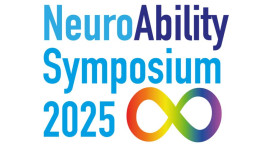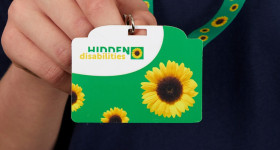- Tūhono home Hoki ki Tūhono
-
- Staff Directory
- Chief Executive Office Auckland International Office Corporate Services Finance Campus Services Functions and Catering Information Systems and Support Marketing, Communications and Engagement Learner Journey Academic Registry International Learner Services Te Punaka Ōwheo
- Learner Experience Academic Excellence Central Campus College of Community Development and Personal Wellbeing College of Engineering, Construction and Living Sciences College of Health College of Work Based Learning Open Education Resource/OERu Research and Postgraduate Studies Te Maru Pumanawa | College of Creative Practice and Enterprise
- Māori Development and Kaitohutohu Office People, Culture & Safety People and Culture Polykids Te Ama Ako | Learning and Teaching Development Wellbeing and Safety Auckland Staff Directory Executive Office Academic Corporate Services Marketing and Business Development Human Resources Campus Quality and Programme Development
-
 Our people make a better world
Our people make a better world
We build the capabilities of individuals, organisations and communities and help them to realise their potential.
Staff Directory
-
- Tools
- Academic Integrity Declaration Form AIC Applications Dashboard Approved Programmes Approved Programme Fees Centralised Assessement Repository Chemwatch CMS - Tūhono & StudentHub updates Course Evaluation and Surveys CRM Applications CRM customer service hub Delegations policy/process Disability and Neurodiversity Dynamics 365 (CRM) EBS Ontrack EBS Report Email Security Personal Portal Employment Matters / Solarworkplace eTaxi eTV
- Hidden Disabilities Sunflower programme FCM travel intranet InPlace International entry requirements Knowledgebase articles Learner Capability Learner Support Dashboards Linkedin Learning Log a job with Marketing Login as an applicant Microsoft 365 Moderation App Moodle OP Docs OP Docs - Publishing OP Image Libraries Performance Excellence Portal Product Evaluation Panel
- Policy Library Privacy Programme and Course Design and Development Qualtrics XM RDS Remote Access Support Portal Research Database Robertson Library Staff FAQs about Graduation Status of Programmes Student Hub (Kāpehu demonstration view) Study Abroad info for learners Te Whare (Te Pūkenga intranet) Tūhauora I Wellbeing resources Uniprint Vault Webexpenses Auckland Tools
-
 Vault
Had an accident or near miss?
Log it here
Vault
Had an accident or near miss?
Log it here
-
- Communities
- Community AI Steering Committee Ally Network EBS Community of Interest EdTech Champions Health & Wellbeing Research Internal Evaluation Neurodiversity Professional Team Professoriate Proud@OP Student Support Website Advisory Group Web Champions Working under the Rainbow Project Learner Capability Trade Training Centre
- Committee Academic Committee Animals@OP Diversity and Equity Doctor of Professional Practice Committee Kaunihera Whakahaere - Leadership Council Internal Evaluation Learning & Teaching Leadership Team Library Committee Mental Health and Wellbeing Advisory Group Otago Polytechnic Board of Directors Pastoral Care Code Committee Programme Approvals Committee Research and Postgraduate Committee Research Ethics Committee Staff Subcommittee
- Think Tanks Mātauraka Our learners achieve educational success Pūtea Our financial success Tākata Our people, our team, our community Tiriti Our active commitment as a Treaty partner Tūroa Our commitment to be a sustainable and responsive organisation
-
 Create a community
Create a community
Do you have a community, committee or project that you'd like represented here?
Communities
-
- About OP
- Keep up to date All news All events All notices All blogs Share your info Create a news article Create an event Create a notice Create a blog
- Community and Partnerships Alumni and friends Education Foundation Operational information Academic calendar 2025 Academic calendar 2026 Current vacancies Dunedin campus map Our policies Te Whare (Te Pūkenga intranet) Topical FAQs
- Who we are Commemorative sites Māori Strategic Framework Our history Our strategic priorities Pasifika Strategic Framework (2025-2030) Vision and Values Working for us OP job opportunities Wellbeing Calendar Working at OP
-
New Zealand: 0800 762 786
contact us
International: +64 3 477 3014
Welcome to the Disability and Neurodiversity quick reference guide. Here you will find resources related to disability and neurodiversity in education.
We also have a Neurodiversity page created by the Neurodiversity Community of Practice, which has other resources, such as information on neurodiversity in the workplace.
Infomation about common conditions
Neurodiversity and disability present in many ways. What works for one individual may not work for another. However, these links contain information for tertiary educators about some of the most common conditions learners disclose at Otago Polytechnic, which can help you make your classroom a more inclusive and accessible learning environment.
- ADHD resources
- Autism resources
- Common accomodations for different types of physical disability
- Developmental dyspraxia/developmental coordination disorder (DCD) resources
- Dyscalcula resources
- Dyslexia resources
- Work-based learning dyslexia resources
- Learning Disability library by the Job Accomodation Network
Resources related to disability in tertiary education
- The Kia Ōrite Toolkit provides current, New Zealand-specific guidance to help tertiary education organisations better support disabled learners.
- Here is an article about why more time is an important accomodation: Learning on crip time: The missing student in your lecture
- The Job Accomodation Network has workplace-focused solutions and a large library of information. Check out their Situations and Solutions finder, where you can search by disability, limitation or occupation.
- Altogether Autism's top tips for supporting Autistic learners.
What are my legal obligations as an Otago Polytechnic employee?
Employers and service providers need to provide reasonable accommodations in actions, services and decisions to assist people with disabilities to participate. Find out more in this booket.
Best practice guides
There is no one-size-fits-all approach to accessibility as individual needs differ. However, here are some general guidelines to help make your content accessible to most learners.
- Choose sans-serif fonts such as Arial or Open Dyslexic, which you can download for free.
- Choose high-contrast colours and avoid using patterned backgrounds. A dark font on a cream or pastel backdrop is preferrable.
- Use bold for emphasis. Avoid italics or underlining as this can make it harder for people with dyslexia to read.
- Left-align text. Justifying or centering large amounts of text makes it harder to read. Headlines may be centered.
- Leave plenty of space around text. Keep visual elements simple and relevant.
- In documents and webpages, use style formats (such as headers) instead of just making text bigger. This allows screenreaders to identify titles and headings.
- Choose plain language wherever possible.
- When creating links, use descriptive text. For example ‘Choose sans-serif fonts such as Arial or Open Dyslexic, which you can download for free' instead of 'Click here.' This allows students using assistive technology such as screenreaders to understand the context and follow the link.
- When sharing images digitally, use Alt Text to create a simple description for screenreaders. Identify the key information the image is meant to share, and keep it simple. If the image is just decorative, add 'decorative' to the Alt Text box.
- Microsoft offers an accessibility checker in Word, PowerPoint, Outlook and other Microsoft programmes.
- Microsoft also has a text-to-speech function that allows programmes to read documents out loud. Many computers also have text-to-speech in their accessibility settings.
- Word also has an Immersive Reader function to make documents more comfortable to read and easier to process. It is worth checking how your documents appear with Immersive Reader before sharing with learners.
- Note: many web browsers offer extensions with similar functions
- Choose sans-serif fonts such as Arial or Open Dyslexic, which you can download for free.
- Generally, use 20-28 point size for main text and 30-44 point size for headers. Different fonts will size differently, so this is just a guideline.
- Choose high-contrast colours and avoid using patterned backgrounds. A dark font on a cream or pastel backdrop is preferrable, bright backdrops can be difficult for some learners.
- Use bold for emphasis. Avoid italics or underlining as this can make it harder for people with dyslexia to read.
- Left-align text. Justifying or centering large amounts of text makes it harder to read. Headlines may be centered.
- Minimise text on each slide. Bullet points often work best for presentations.
- Organise information vertically using
- Headers
- Bullet points
- Keep visual elements simple and relevant.
- Choose plain language wherever possible.
For slides you will share digitally
- Use the layout options in PowerPoint instead of adding text boxes to a blank slide. Screenreaders can recognise titles and this helps the information be conveyed logically. Give each slide a different title and number so students can navigate using assistive technology.
- When creating links, use descriptive text such as ‘Choose sans-serif fonts such as Arial or Open Dyslexic, which you can download for free.' This allows students using assistive technology such as screen readers to follow the link.
- When sharing images on digital documents, use Alt Text to create a simple description for screenreaders. Identify the key information the image is meant to share, and keep it simple. If the image is just decorative, add 'decorative' to the Alt Text box.
- Sharing slides in advance can help some learners prepare, for example by having time to read through the slides if it is difficult to read quickly in class.
You can read more about accessibility and assistive technology for neurodivergent learners in this article from Te Ako Ama.
The University of Oxford Centre for Learning and Teaching has a webpage of accessible learning and teaching resources.
Check the Assistive Technology page from Student Success to find out what is available for our learners.
See the Ministry of Social Development's Accessibility Guide which includes print and digital accessibilty guidelines.
Professional Development opportunities
Want to learn more about disability, neurodiversity and accessibility? Here are some learning opportunities to get you started:
Achieve has free online courses including:
- Disability Confidence 101
- Tertiary Education and Training Educators
- Tertiary Education and Training Support Staff
The University of Illinois has a free online course called An Introduction to Accessibility and Inclusive Design. While the module on legalities is about American law, the other modules have information applicable anywhere.
Who to contact for further support
- Your Academic Capability Partner at Te Ama Ako
- Find out about Accessibility Services available to students
- Email an Accessibilty Support Advisor at Student Success
- The Neurodiversity Community of Practice
News and Events

News
Call for Voices: NeuroAbility Symposium 2025
Published on 20 March 2025
The NeuroAbility Symposium 2025 will be held at Otago Polytechnic / Te Kura Matatini ki Otago, Dunedin, New Zealand, September 25th and 26th, with a focus on Kanorau ā-roro solutio


News
Quiet hours in the Hub
Published on 25 November 2024
Every Friday between 2pm and 4pm, noise and light will be reduced in the Hub for a sensory friendly experience.


News
Neurodiversity hui - Thursday 21 November
Published on 12 November 2024
Student Success will be sharing initiatives for supporting neurodivergent learners


News
Low sensory and quiet hours around Dunedin
Published on 09 April 2024
If you prefer a quieter, calmer environment, here is a list of sensory-friendly hours at different businesses around Dunedin.

